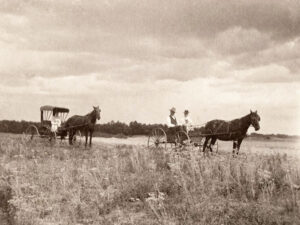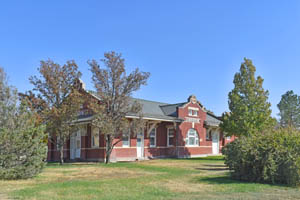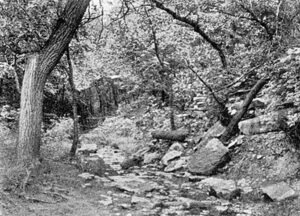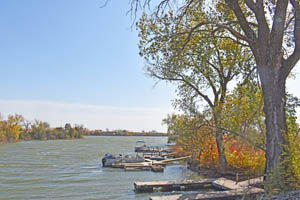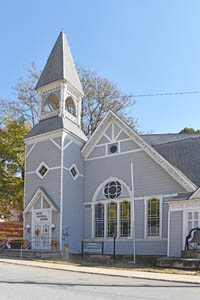Marion, Kansas, located in the scenic Flint Hills in central Marion County, is the county seat and the oldest settlement in the county. It is located on the north bank of the Cottonwood River, at the point of confluence of Mud Creek. It was named in honor of Francis Marion, a brigadier general in the American Revolution, known as the “Swamp Fox.” As of the 2020 census, the population of the city was 1,922
First called Marion Centre, it was founded in June 1860 when surveyors told settlers in five covered wagons at Emporia, Kansas, that there was good, virgin farmland about 60 miles to the southwest. One of the travelers in the group, George Griffith, was the first to build a shanty on the site and was the first in Marion County to file for a homestead on August 8, 1860. A store was opened in 1861, and the post office was established on September 30, 1862. The city became the county seat in 1863.
The town was beautifully located among streams, woods, and springs. Limestone was abundant, and many buildings were constructed of this material.
Marion Centre’s population increased faster after the Civil War. The town was officially laid out on December 8, 1866. The Marion Methodist Church was organized in 1869. The Presbyterians built the first church building in 1871, which is still used today.
In 1875, it was incorporated as a city of the third class. An election was held on September 3, 1875, and a Mayor and Council form of Government was established. The officers elected were: Mayor, J. H. Costello; councilmen, Frank Doster, E. N. Eby, Frank Bower, William Kellison, J. N. Rogers, and T. T. David; City Clerk, John Williams; City Marshal, J. S. Griffith; Police Judge, R. C. Coble; and City Treasurer, N. W. Gordon.
In 1878, the Atchison, Topeka & Santa Fe Railroad and parties from Marion and McPherson Counties chartered the Marion and McPherson Railway Company. In 1879, a branch line was built from Florence to McPherson. In 1880, it was extended to Lyons, and in 1881, it was extended to Ellinwood. The Atchison, Topeka, and Santa Fe Railroad leased and operated the line. The original branch line connected Florence, Marion, Canada, Hillsboro, Lehigh, Canton, Galva, McPherson, Conway, Windom, Little River, Mitchell, Lyons, Chase, and Ellinwood. Later, the Santa Fe depot building was converted into the Marion Library.
Good, substantial buildings were erected in the late 1870s and early 1880s. A good-graded school was maintained as early as 1878.
The post office shortened the name to Marion on October 15, 1881.
In 1882, its Mayor was Thomas W. Bowen, Clerk Charles S. Triplett, Police Judge C. W. Keller, and City Attorney L. F. Keller.
In 1887, the Chicago, Kansas, and Nebraska Railroad built a branch line north-south from Herington through Marion to Caldwell.
In 1888, Marion became a second-class city.
In 1889, the Marion Belt and Chingawasa Springs Railroad built a 4.5-mile railroad from Marion northeast to Chingawasa Springs. A hotel, a depot, and a restaurant were built near the spa site. The Santa Fe and Rock Island offered round-trip fares from Chicago, Illinois, and western cities to Chingawasa Springs.
The Chicago, Kansas, and Nebraska Railroad was taken over by the Chicago, Rock Island & Pacific Railroad in 1891.
Unfortunately, an economic panic in 1893 closed down the Chingawasa Springs health spa and hotel, and the quarry business along the tracks never developed sufficiently. The same year, the railroad ceased operations, and tracks to Chingawasa Springs were removed in 1910.
In 1910, Marion continued to be at the junction of the Atchison, Topeka & Santa Fe, and the Chicago, Rock Island & Pacific Railroads. It was the central trading point of a rich agricultural and stock-raising district. It had city waterworks, paved streets, a fire department, electric lights, three banks, two newspapers — the Marion Record and the Review, a creamery, flour mills, a good hotel, and all lines of mercantile establishments. It also had a fine courthouse and was supplied with express and telegraph offices and an international money order post office with seven rural routes. The population at that time was 1,841.
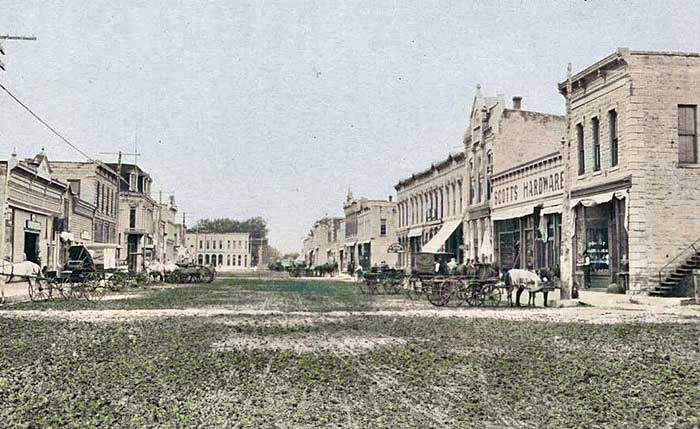
Marion, Kansas Main Street, 1918.
The National Old Trails Road, also known as the Ocean-to-Ocean Highway, was established in 1912 and was routed through Lehigh, Hillsboro, Marion, and Lost Springs.
In 1937, the Civilian Conservation Corps completed Marion County Lake southeast of Marion for recreational purposes.
Numerous floods occurred during Marion’s early history. Due to heavy rains in June and July 1951, rivers and streams flooded numerous Kansas cities, including Marion. Many reservoirs and levees were built in Kansas in response to the Great Flood of 1951.
Marion’s population peaked in 1960 at 2,169.
From 1964 to 1968, the Marion Reservoir was constructed northwest of Marion.
The railroad line from Florence to Marion was abandoned in 1968.
The Chicago, Rock Island, and Pacific Railroad shut down in 1980 and reorganized as the Oklahoma, Kansas, and Texas Railroad. In 1988, it merged with the Missouri Pacific Railroad and finally merged with Union Pacific Railroad in 1997.
In 1992, the line from Marion to McPherson was sold to Central Kansas Railway. The following year, the line was abandoned after heavy flood damage.
Today, two lakes, Marion Reservoir and Marion County Park and Lake, are located within a short distance of Marion.
Marion Reservoir: This federal facility is a 6,200-acre lake with good fishing, camping, RV hookups, swimming, boating, skiing, windsurfing, picnic facilities, hunting, and much, much more. Marion County Park and Lake: A beautiful, peaceful area with RV hookups, shower and bathroom facilities, swimming, water skiing, windsurfing, picnic facilities, shelter houses, a heated fishing dock, a large meeting hall, and much, much more!! Marion County Lake was recently added to the National Register of Historic Places.
Marion Historical Museum displays artifacts from the town’s early history and items from Native American history and archaeological digs. The city has several historic buildings on the National and State Register of Historic Places. These include:
- Bown-Corby School is a two-story Late Gothic Revival-style building constructed in 1929. It is at 412 N. 2nd St.
- Donaldson and Hosmer Building at 318 E Main is a financial building.
- The Elgin Hotel, a three-story limestone building, opened in September 1886 and continues to serve guests today at 115 North 3rd Street.
- Hill Grade School, 601 East Main Street, was built in 1872-73. It is now the oldest public school building in the state and is in daily use.
- Marion County Courthouse was designed in the Richardsonian Romanesque style in 1906. Located at 200 South 3rd Street.
© Kathy Alexander/Legends of Kansas, updated July 2024.
Also See:
Santa Fe Trail in Marion County
Sources:
Blackmar, Frank W.; Kansas: A Cyclopedia of State History, Vol I; Standard Publishing Company, Chicago, IL 1912.
Cutler, William G; History of Kansas; A. T. Andreas, Chicago, IL, 1883.
Kansapedia
Marion, Kansas
Wikipedia


